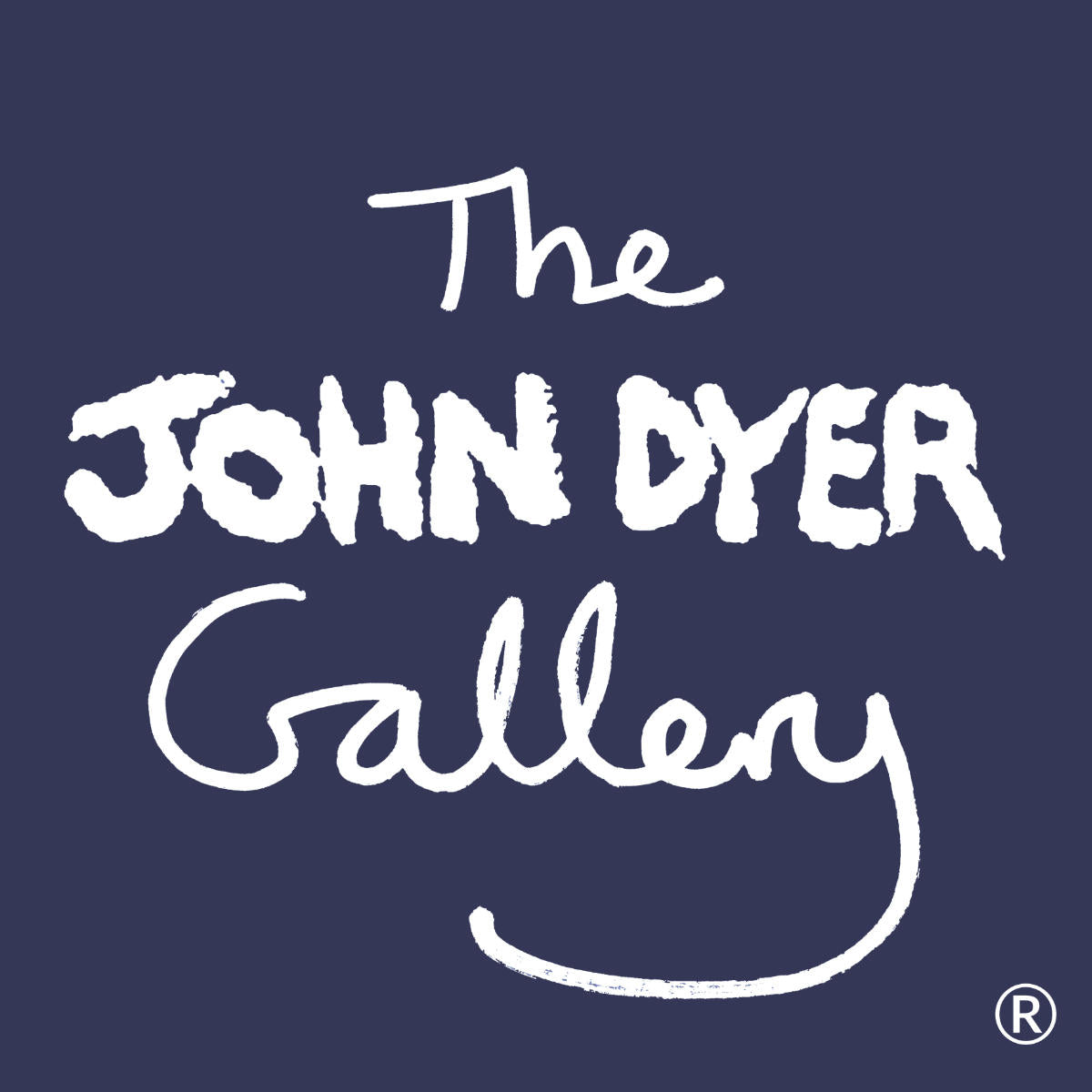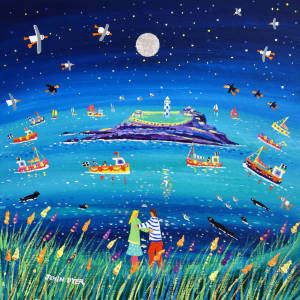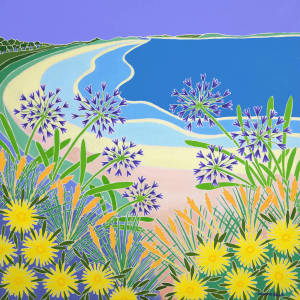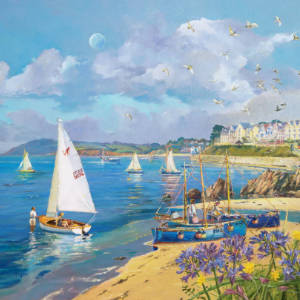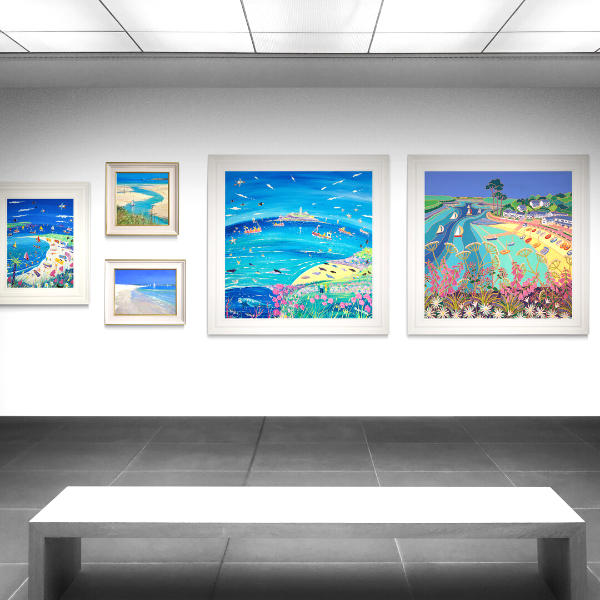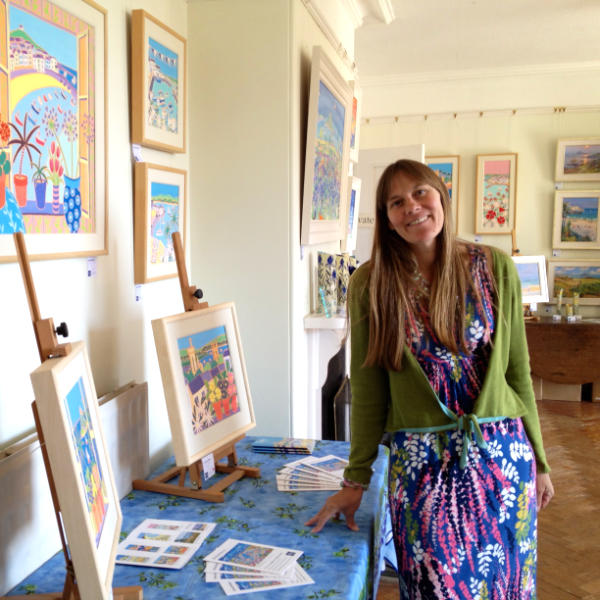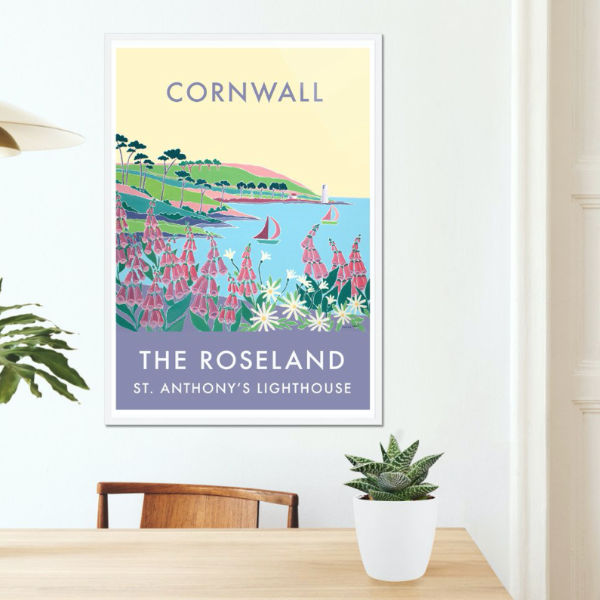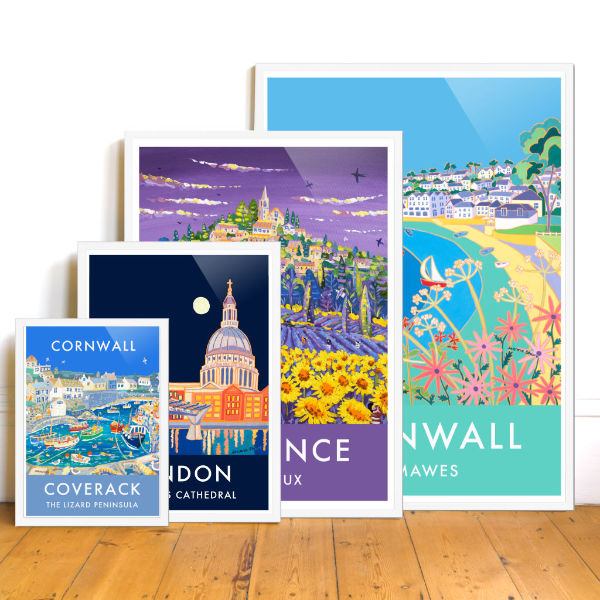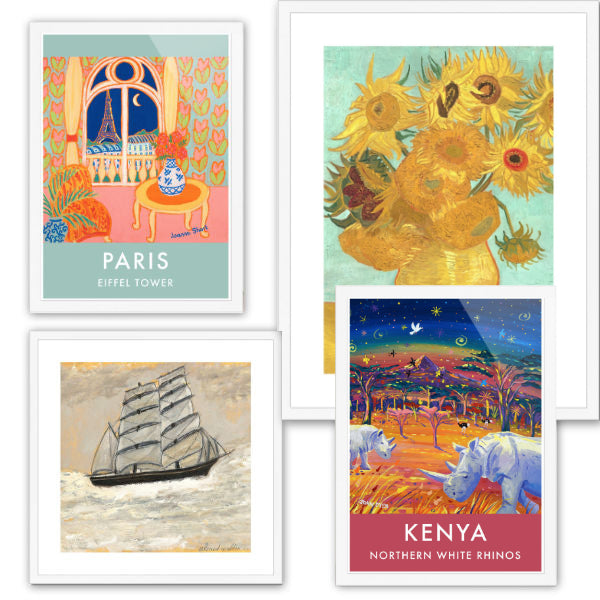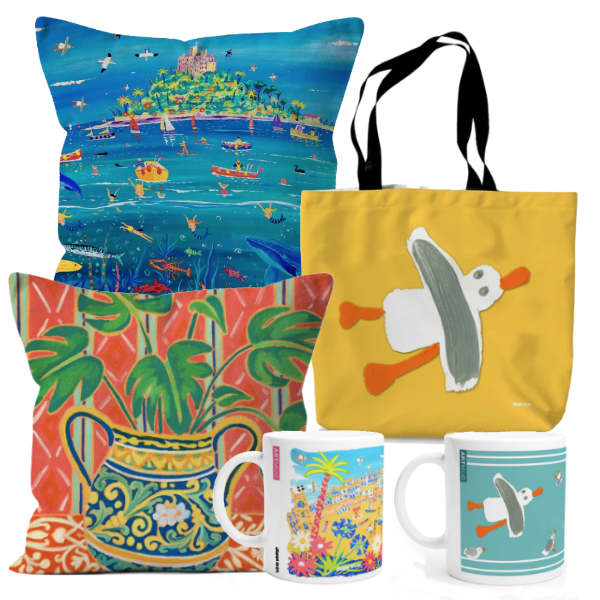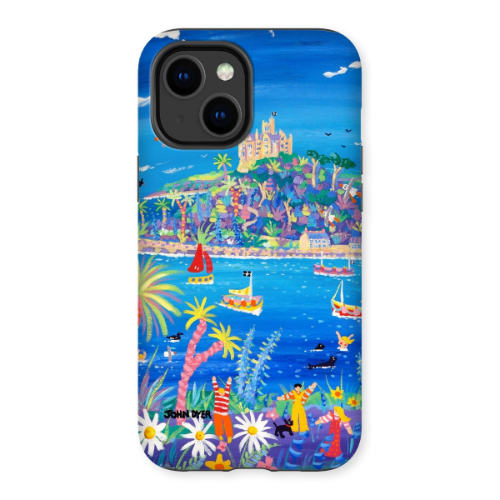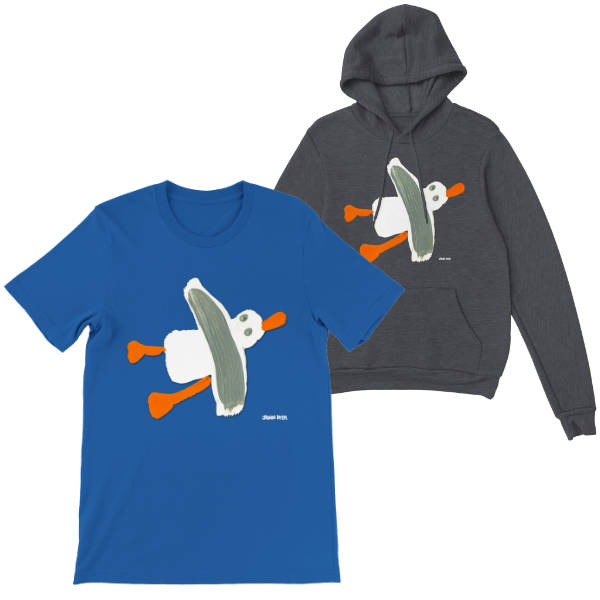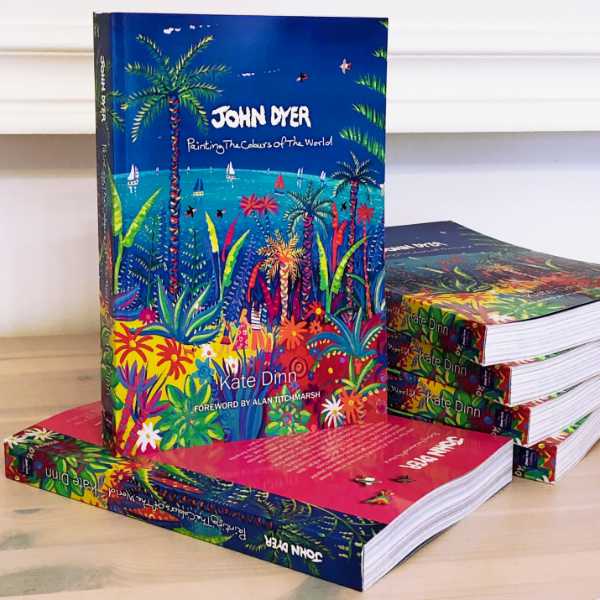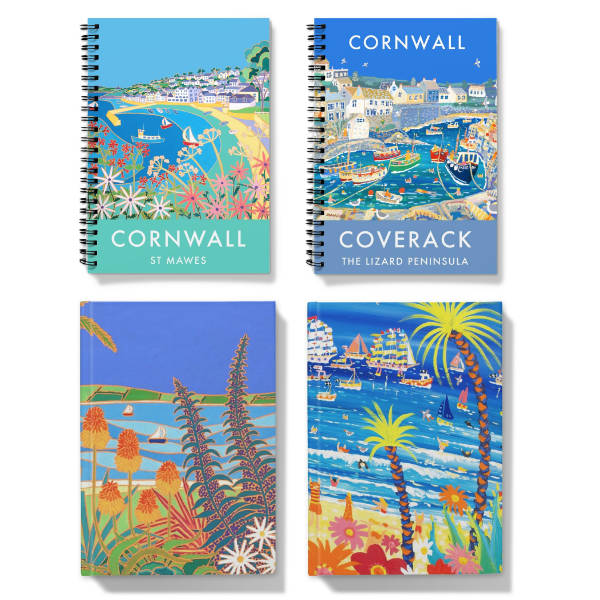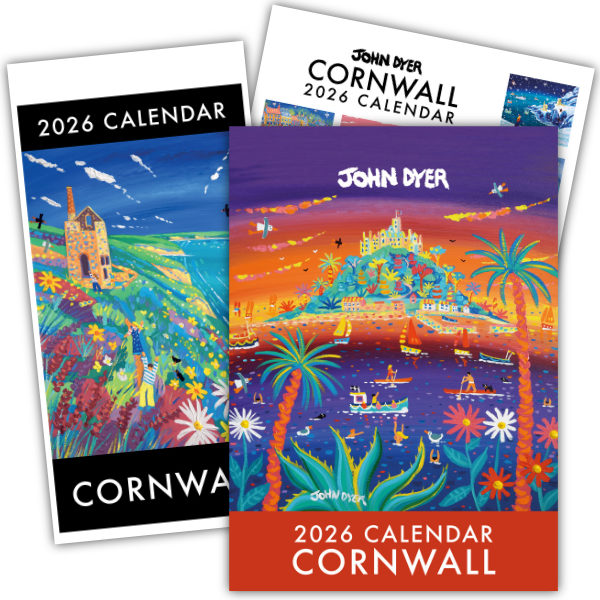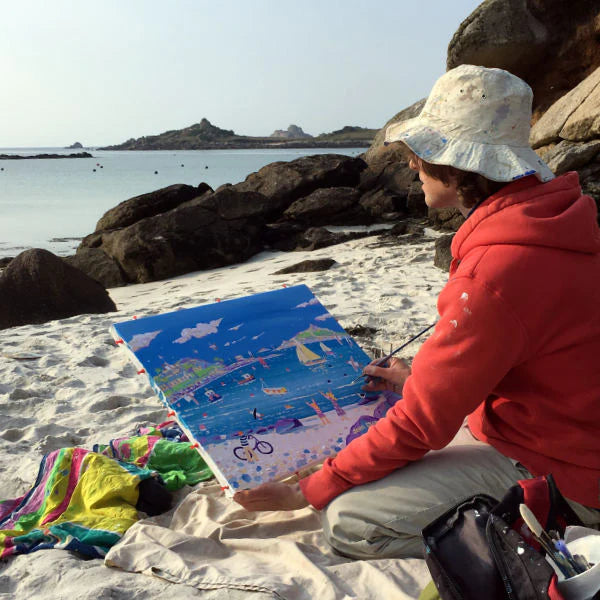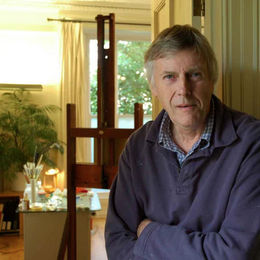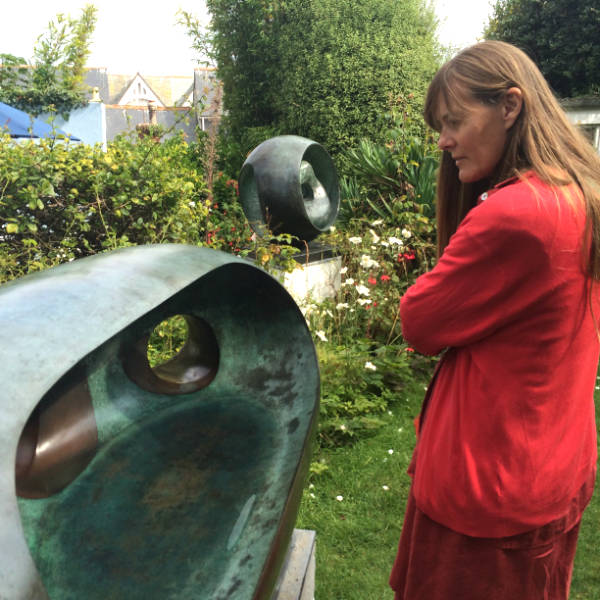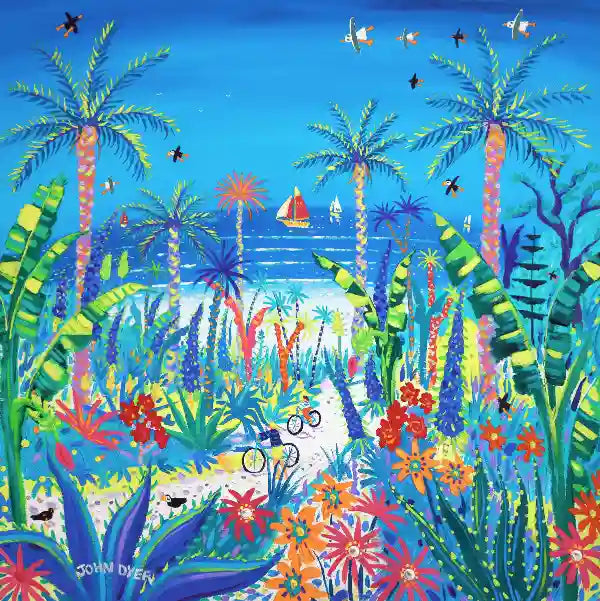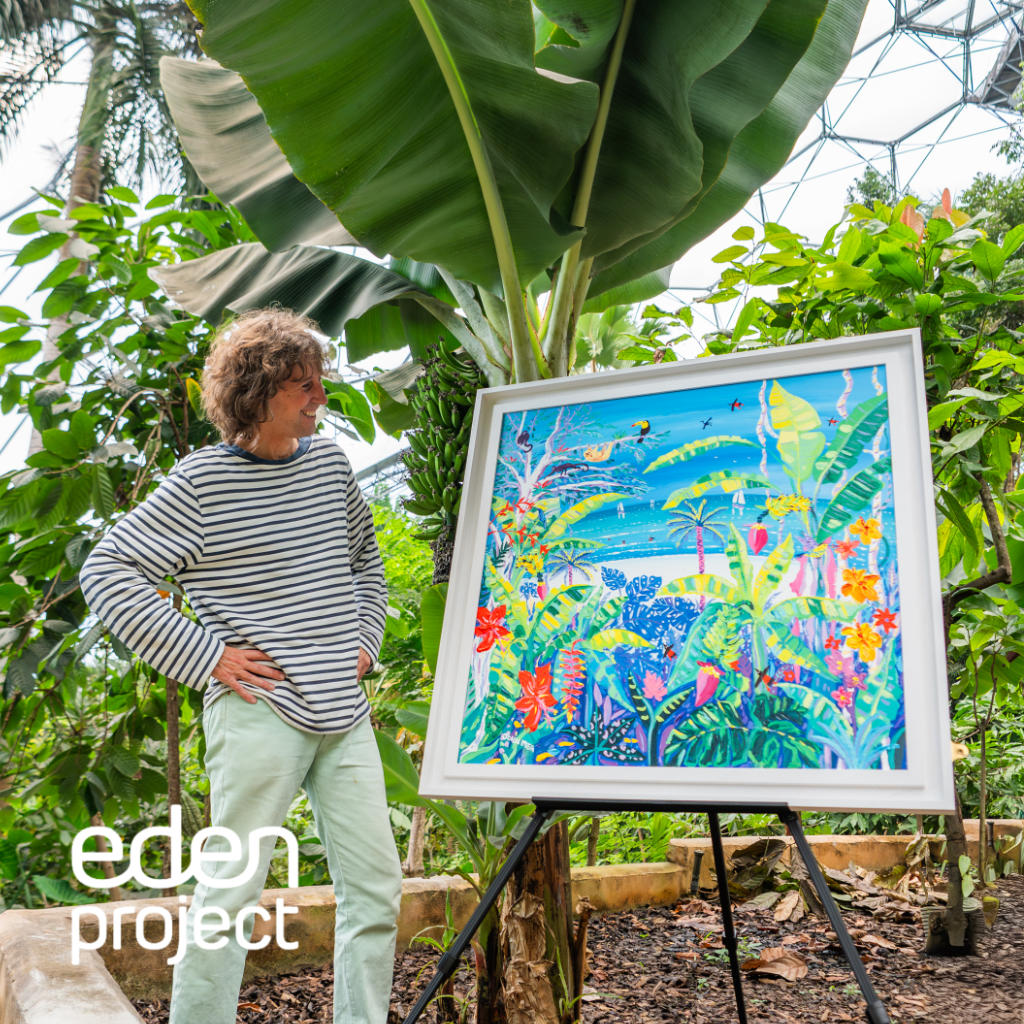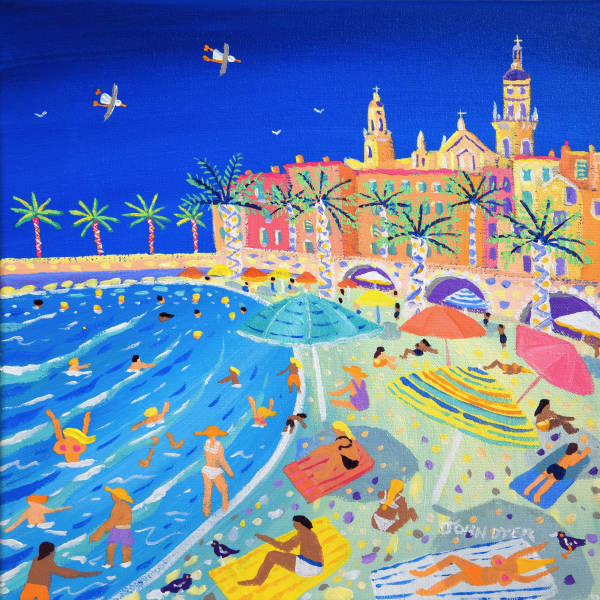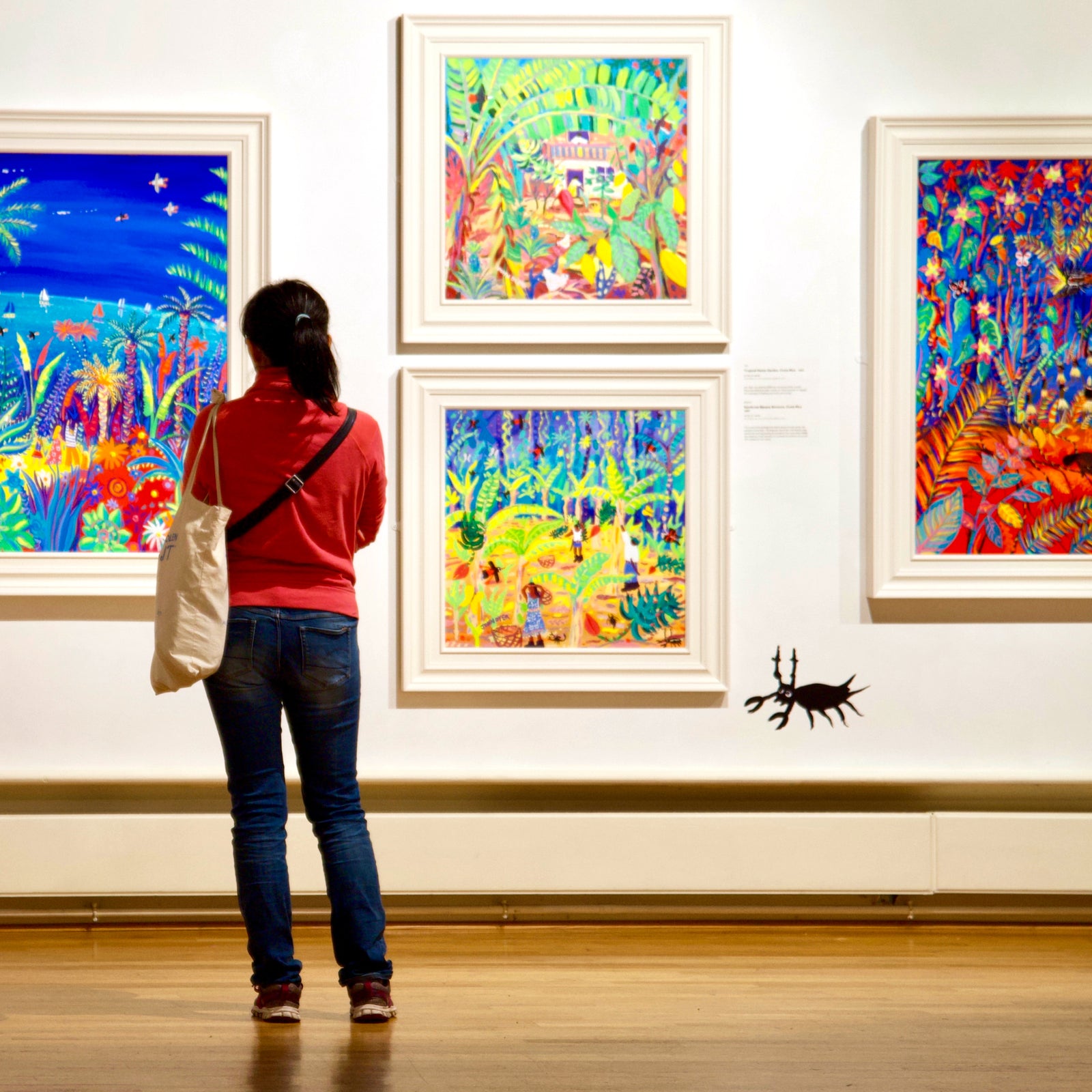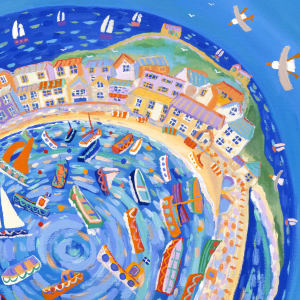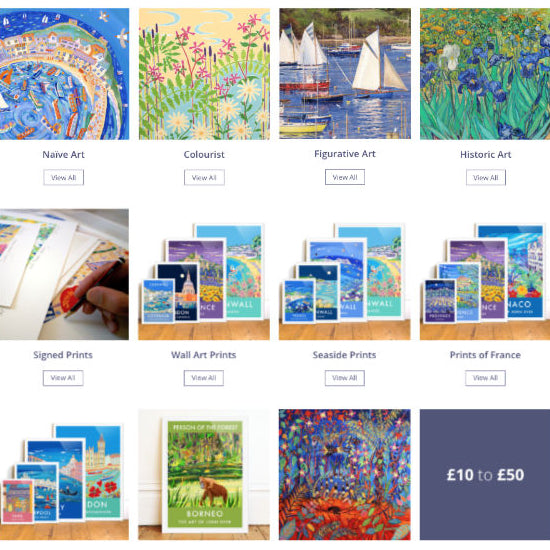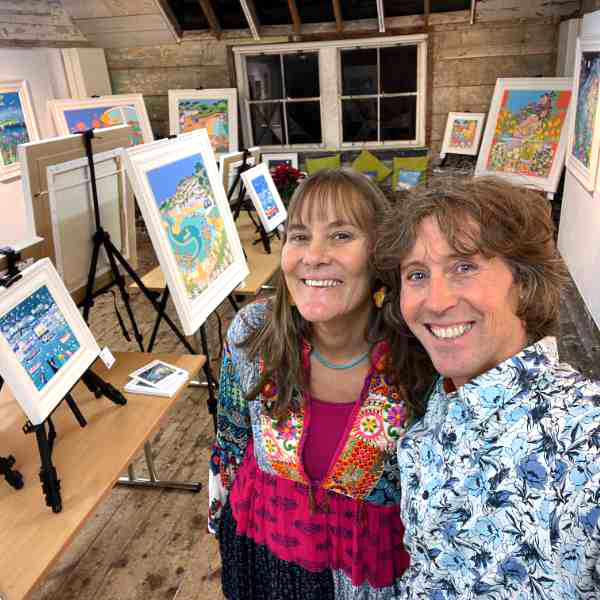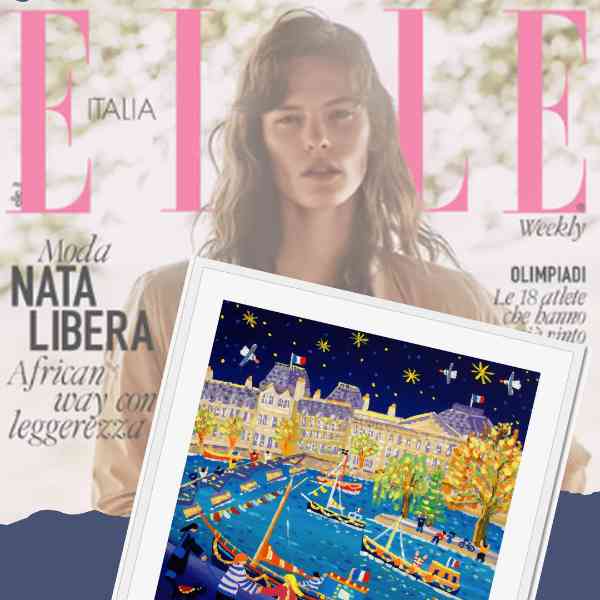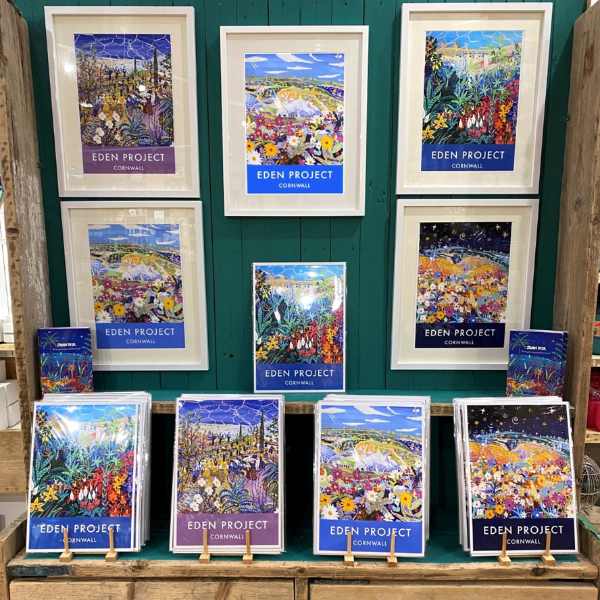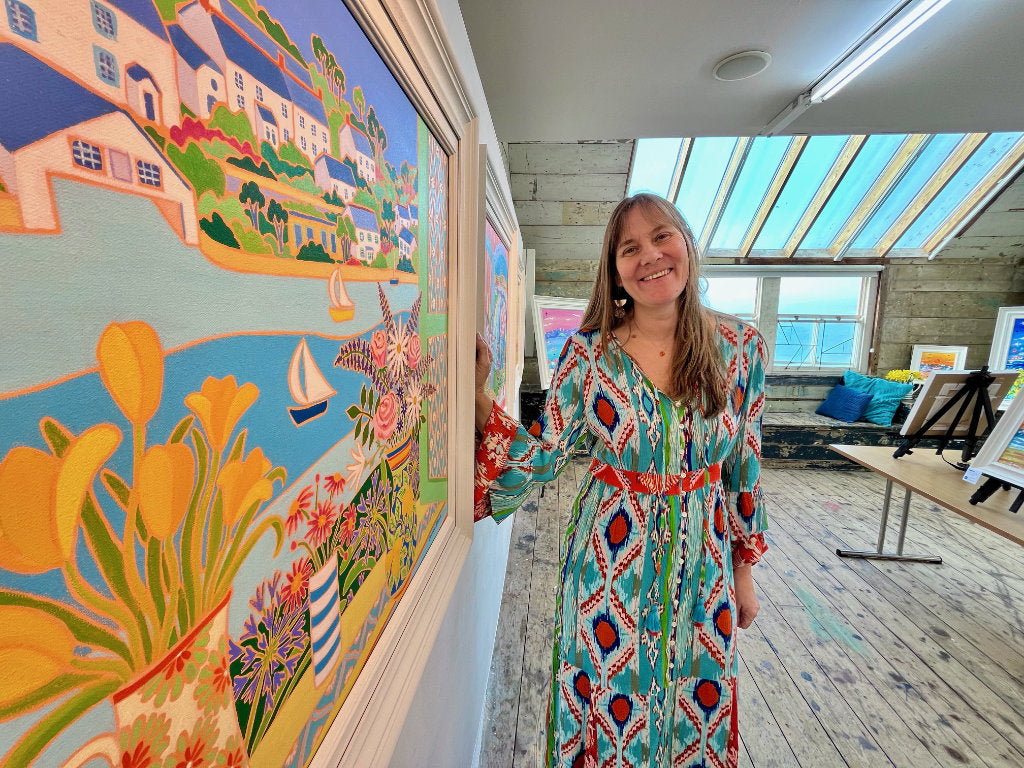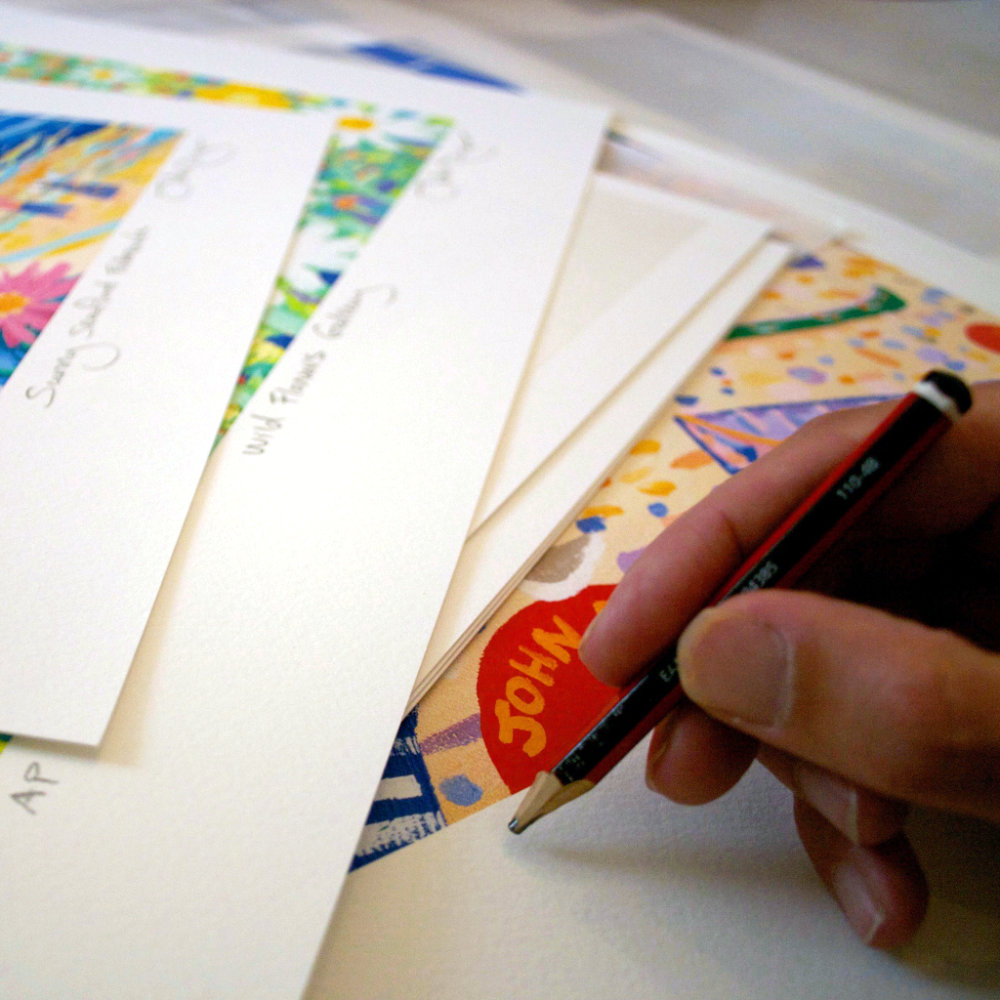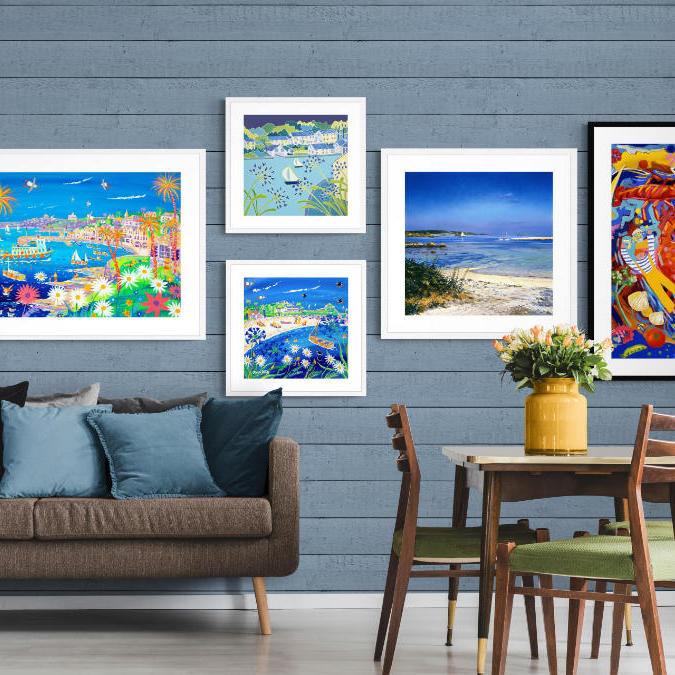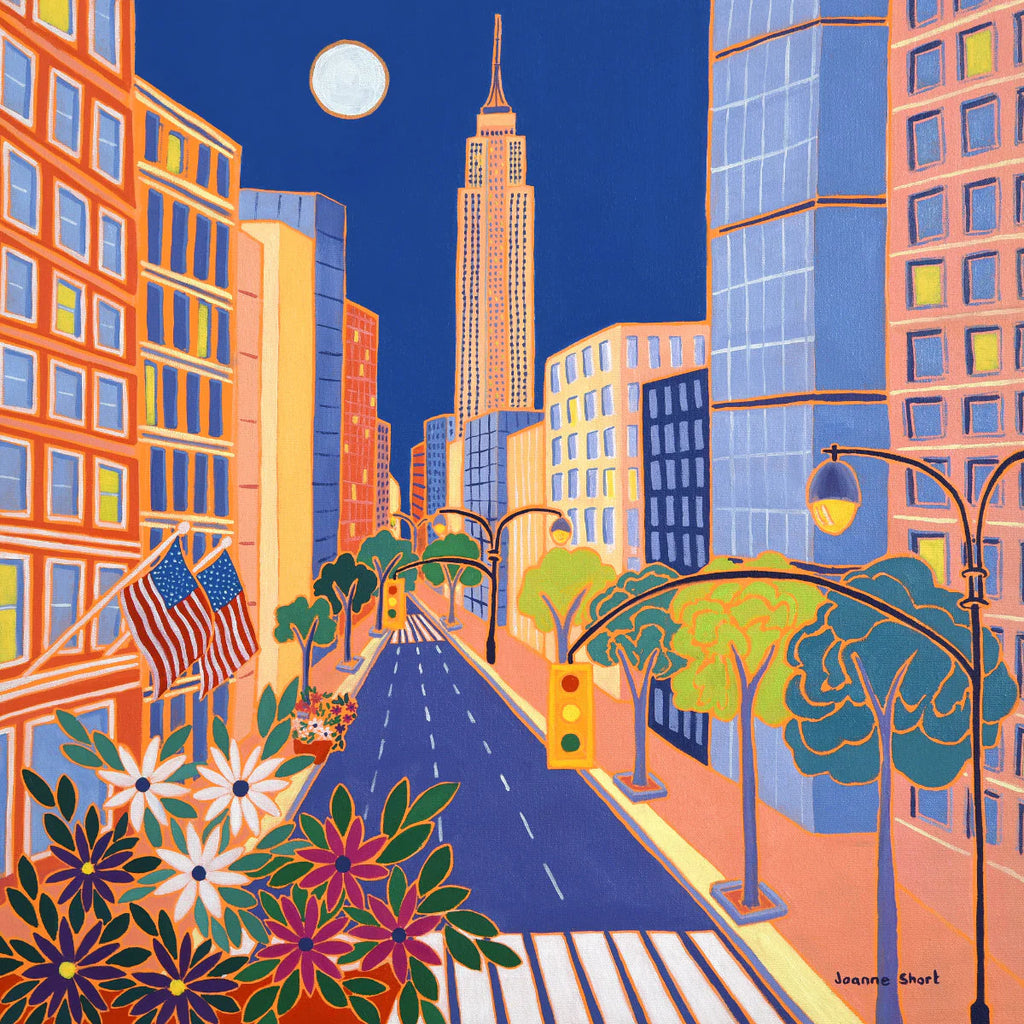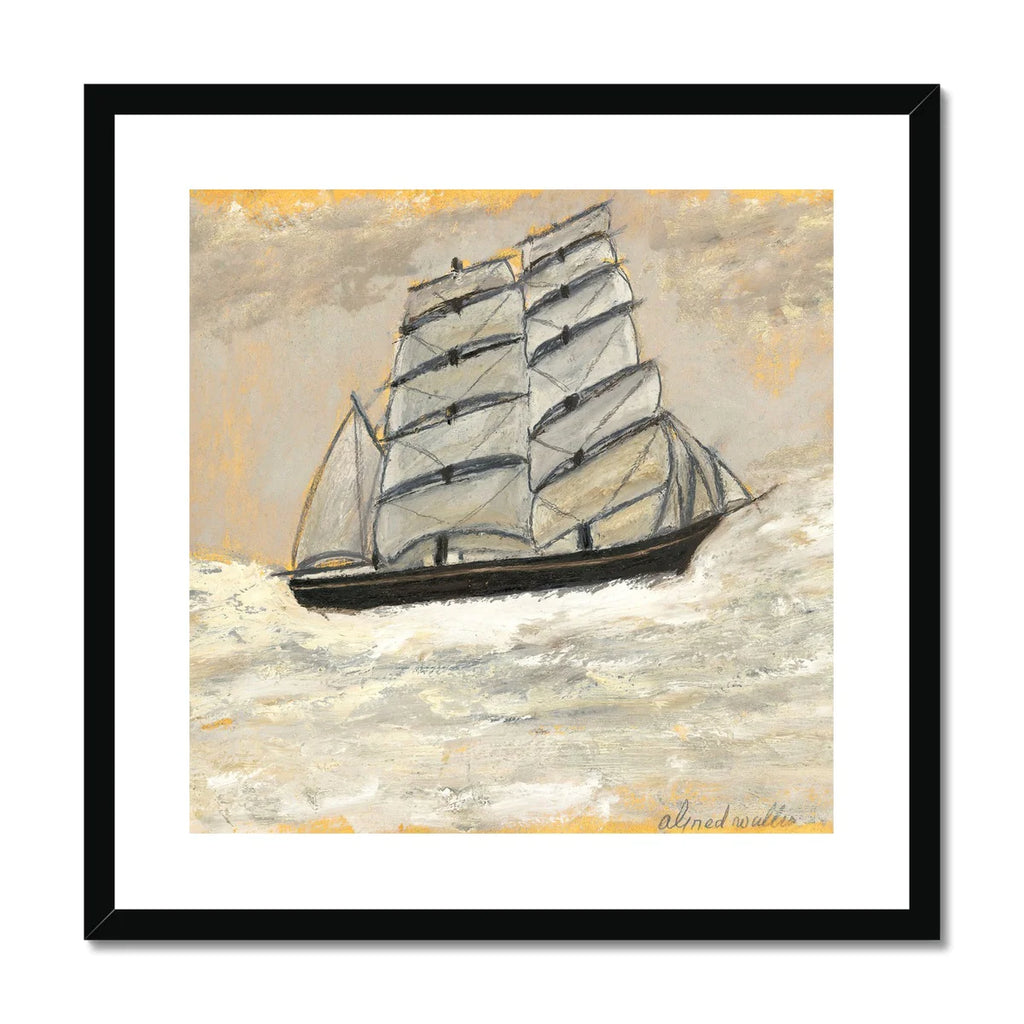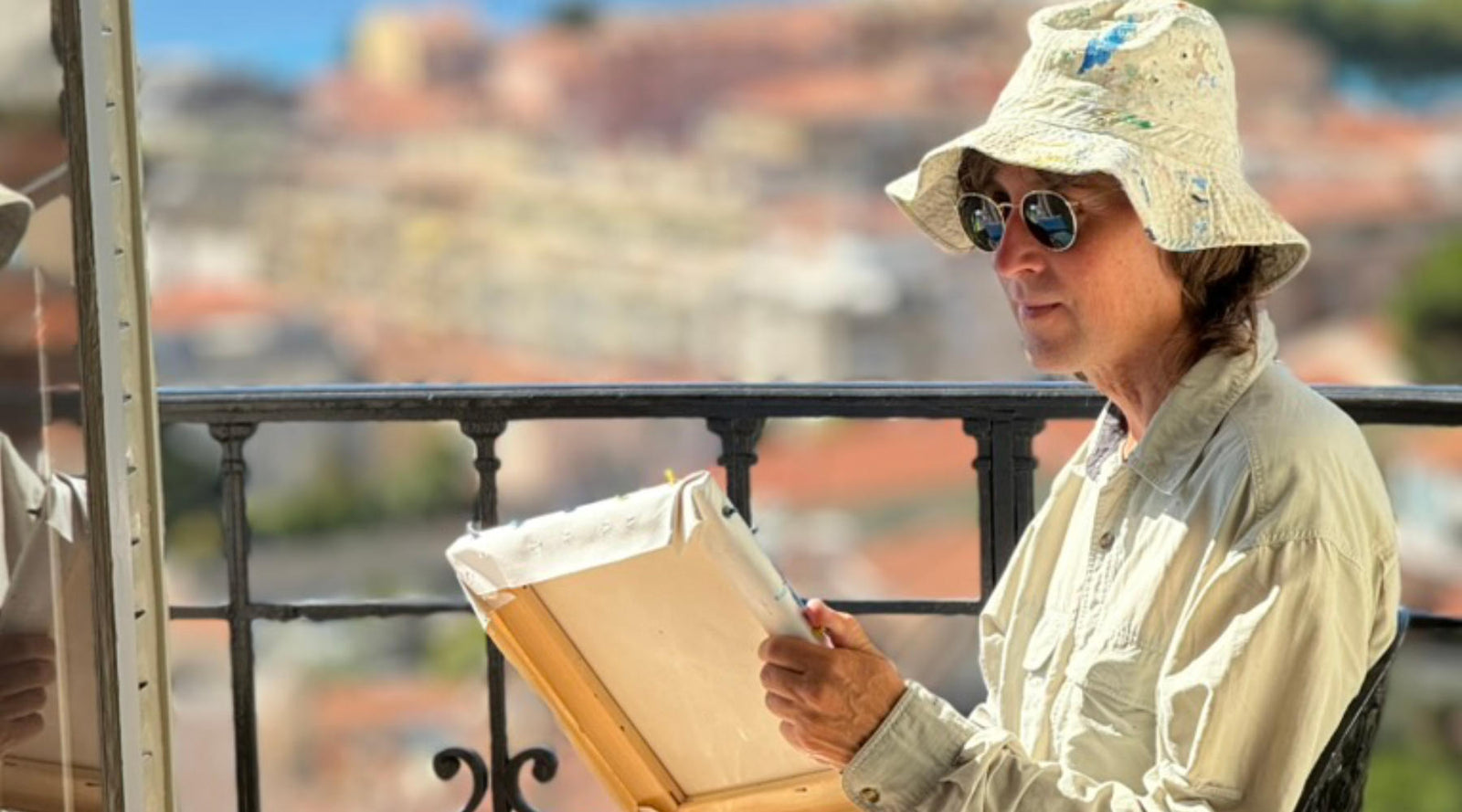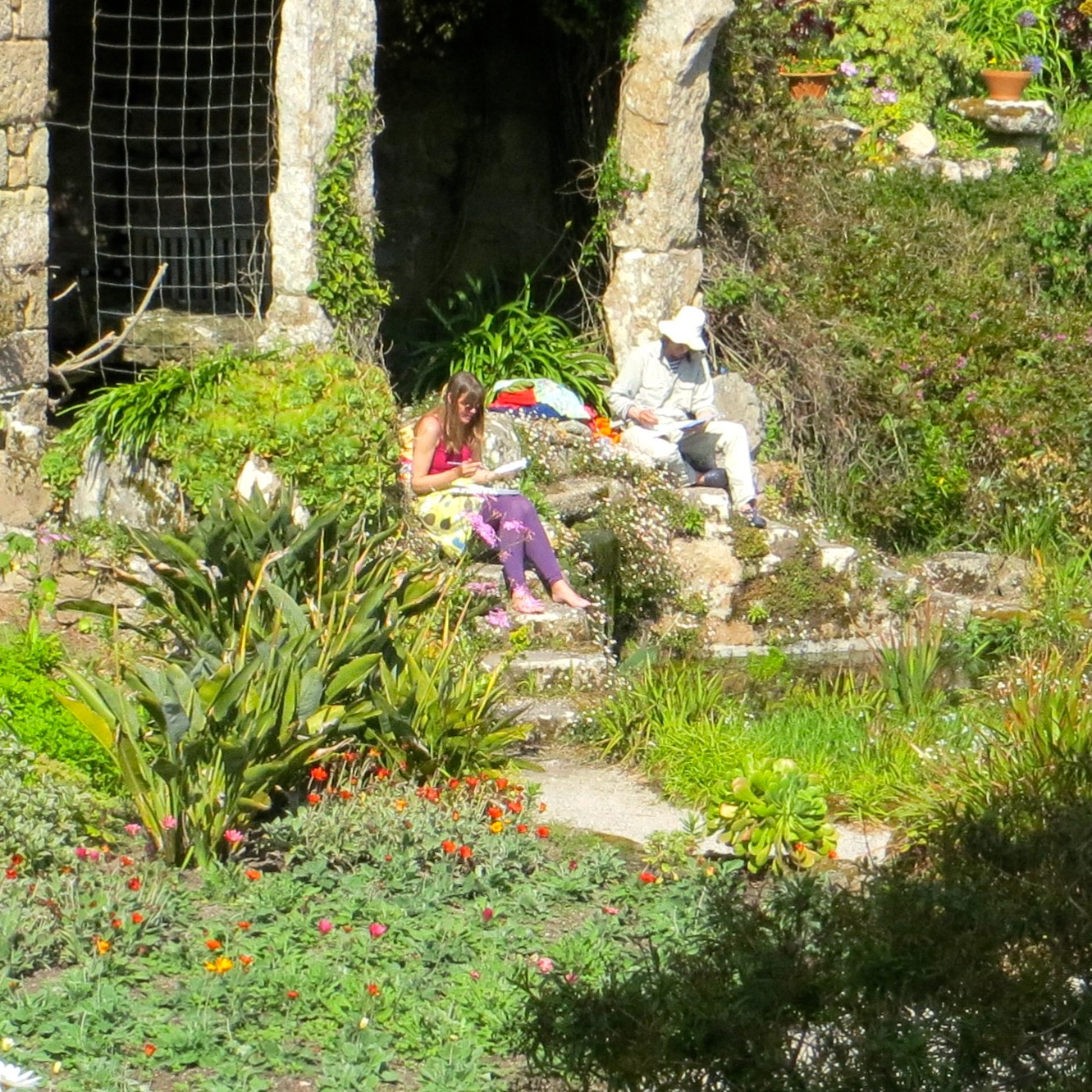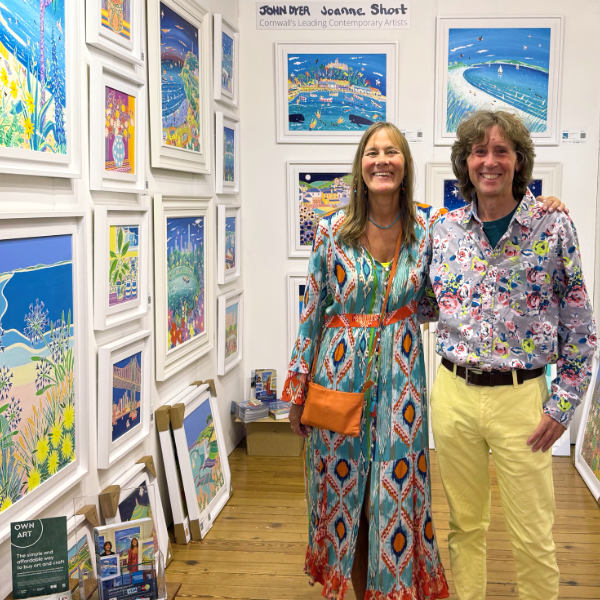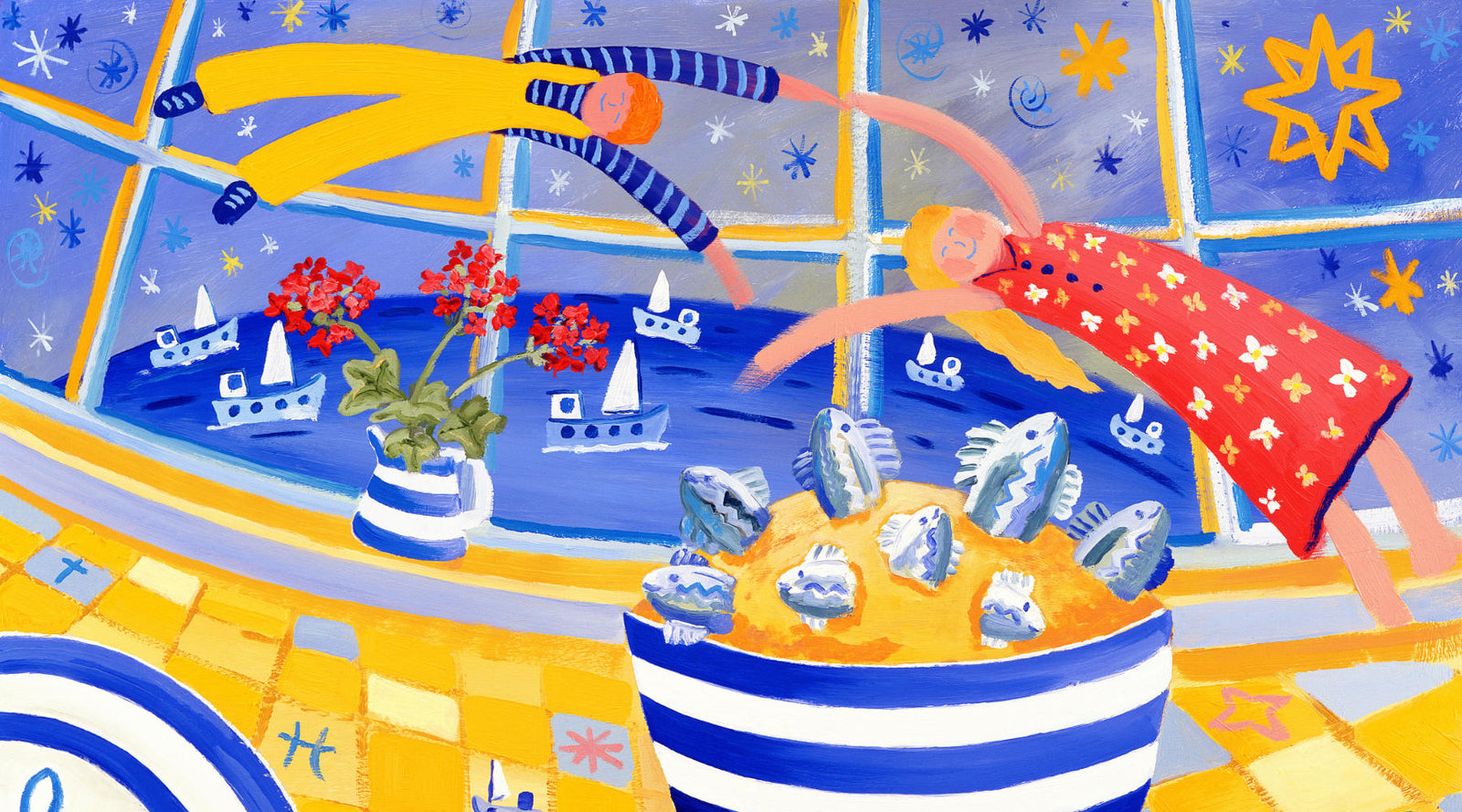
Above: Detail of 'Enjoying the Day's Catch', open-edition figurative art print by John Dyer. Buy online
Figurative painting breathes life into a canvas. It brings the human experience into focus with strokes and colour. By examining influential artists and iconic pieces, we unlock the narrative power of figurative painting that has captivated audiences for generations.
Buy New Figurative Paintings Online
Above: 'Moonlit Manhattan, New York’. 24x24 inches oil on canvas. Paintings of America by British Artist Joanne Short
Figurative art is representational - it clearly depicts actual objects, figures and landscapes as opposed to abstract art, which develops shapes, forms and textures from the original source.
Key Takeaways
-
Figurative art, rooted in representing real-world objects and individuals, offers a broad spectrum of styles, from hyperrealism to impressionism, and continues to be a favourite among collectors due to its tangible connection to reality.
-
Iconic twentieth-century artists like Picasso and Hockney have made significant contributions to figurative art with works showcasing innovation in form, colour, and emotional expression.
-
Figurative art deeply influences pop culture and remains relevant today, driving themes in fashion, design, and media. At the same time, top galleries worldwide draw enthusiasts to the evolving styles and themes in this art form.
Exploring the Essence of Figurative Painting
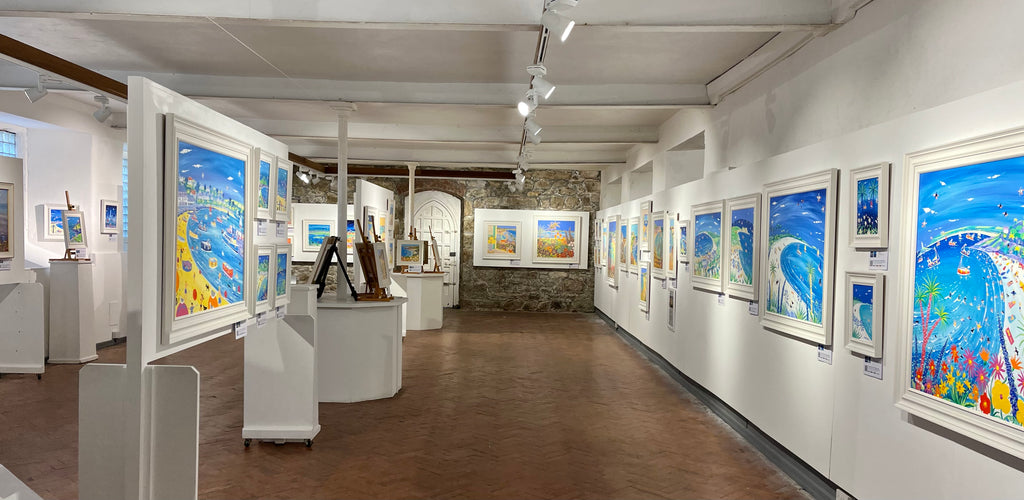
Above: Exhibition of figurative paintings by John Dyer and Joanne Short, St Ives
Figurative art, a term as old as art itself, refers to artwork grounded in the real world and representing objects or individuals in a recognisable manner. This form of artistic expression dates back to the Upper Paleolithic era, when cave paintings first depicted animals and humans. Figurative art replicates nature, yet allows for diverse perspectives as seejn by the artist. Figurative art retains a strong connection to real-world objects, have craft and are the most collected art form among art collectors.

Above: Artist Joanne Short standing with a painting by St Ives Artist Christopher Wood
Figurative paintings by Cornish artists are some of the most widely collected.
Above: Alfred Wallis Framed Open Edition Cornish Art Print. 'Sailing Ship in a Stormy Sea'
The resurgence of figurative art in the mid-twentieth century during the Expressionist movement has seen it adapt to various modern art movements over time. Today, the human figure has become a prominent theme in contemporary art, displaying a range of styles from modern realism to naïve representations with narrative of the human form.
With its tangible nature and scope for experimentation, modern figurative art continues to draw artists and art enthusiasts alike, proving its timeless relevance and enduring appeal.
The Spectrum of Styles in Figurative Art
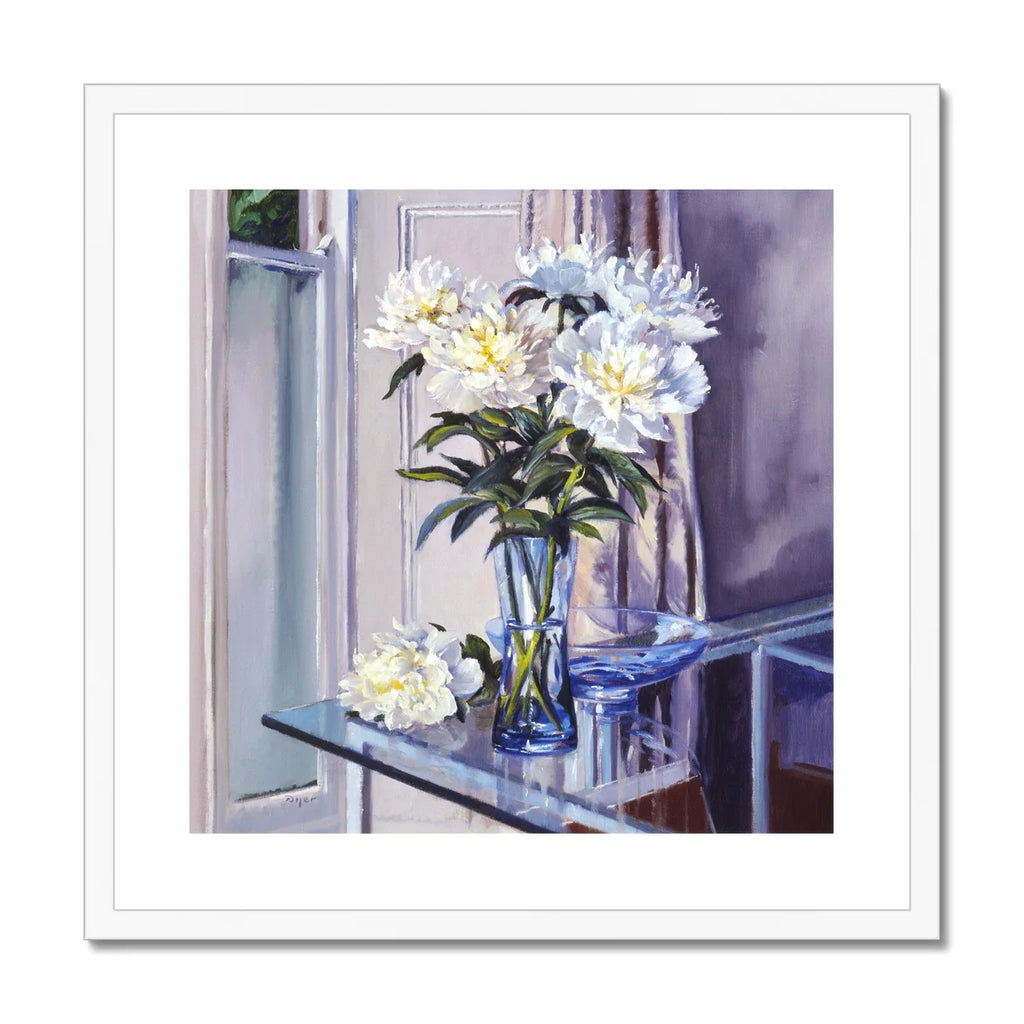
Above: Ted Dyer Still Life Framed Open Edition Cornish Fine Art Print. 'White Peonies in a Blue Vase'
Figurative art offers the artist a broad spectrum of styles to explore, making it a versatile and fascinating art form. Some of the styles in figurative art include:
-
Hyperrealism: characterised by meticulous precision and attention to detail, creating artworks that closely resemble photographs such as the still life paintings and art prints by Ted Dyer.
-
Expressive abstraction: focuses on conveying emotions and feelings through abstract representations of the human figure.
-
Stylised portraiture: modern interpretations of portraiture that often incorporate unique and exaggerated features.
The styles in figurative art, including various art styles, are as diverse as they are captivating.
We’ll examine these styles to comprehend their contribution to the richness of figurative art.
Expressive Abstraction: Emotion Through Form
Expressive abstraction is a style where artists use form and colour to evoke feelings and tell stories. Artists like Ted Dyer and John Dyer have employed this style to great effect. Here are some techniques they use to achieve expressive abstraction:
-
Ted Dyer uses impressionistic techniques to evoke the atmosphere of the Cornish landscapes.
-
John Dyer employs naïve forms and vibrant colour, creating joyful and sometimes impasto original works that capture the essence of life.
-
Joanne Short uses pattern and colour to describe and inform her exquisite colourist oil paintings
John Dyer, one of Cornwall's most famous contemporary figurative painters, uses expressive abstraction, and aims to evoke emotions in the viewer. His paintings:
-
Are influenced by the vivid colours and joy of Cornwall.
-
Possess the ability to elevate one’s mood and change the ambience of an exhibition.
-
His works, inspired by his everyday life experiences combined with many environmental art residencies across the globe, have been exhibited in the national art collections of the UK.
Iconic Figurative Paintings of the Twentieth Century
The twentieth century witnessed a series of groundbreaking works that have left an indelible mark on the world of figurative art. Artists like Pablo Picasso, Alberto Giacometti, and Lucian Freud pushed the boundaries of this style, creating iconic works that continue to inspire artists today. We should examine some of these masterpieces more thoroughly.
Pablo Picasso's 'Weeping Woman'
‘Weeping Woman’ is one of Pablo Picasso’s most significant works, depicting an expression of unspeakable grief and pain. The fragmented features and the use of acid green and purple serve to heighten the painting’s emotional intensity. Created in late 1937, ‘Weeping Woman’ is part of a series that portrayed Dora Maar, Picasso’s lover and muse at the time. The painting was created as a form of protest and is derived from an image in Picasso’s anti-war mural, Guernica, considered to be a thematic extension of the tragedy portrayed in that artwork.
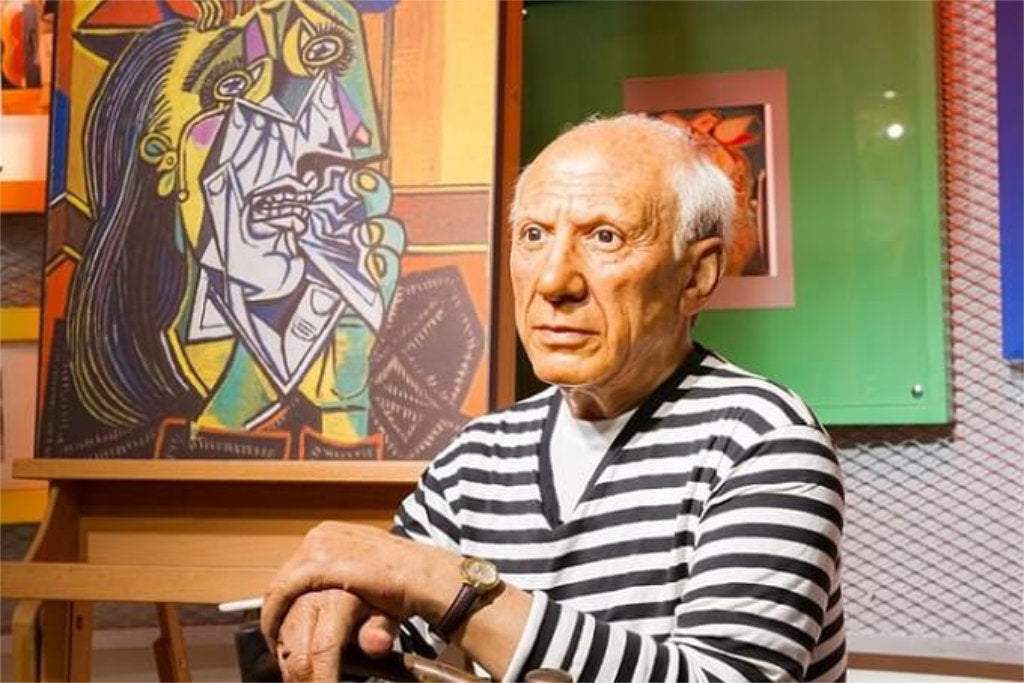
Above: Photograph from The Times of Picasso with his painting 'Weeping Woman', Pablo.picasso.org
Picasso’s ‘Weeping Woman’ has had a substantial impact on the figurative art movement. The painting’s emotional depth and innovative techniques have influenced many artists and continue to inspire works of art today. Picasso was known for his emotive utilization of form and colour and his experimentation with different styles, all of which have contributed to his standing as a benchmark in 20th-century figurative art.
David Hockney's Portraits
David Hockney, another master of figurative art, is known for his captivating portraiture. His work has evolved significantly over time, initially using photography as a tool for his paintings, producing photo-collages, and then transitioning to painting from life. Hockney’s style is marked by its incorporation of influences from various art movements, his exploration of abstraction, and his expressive marks. He often employs the method of ‘squaring up’ to copy or enlarge an image, and he utilizes ‘eyeballing’ for drawing portraits, which demonstrates his innovative approach in capturing his subjects.
Some of Hockney’s most notable portraits include ‘The Splash’, ‘Mr and Mrs Clark and Percy’, and ‘Portrait of an Artist (Pool with Two Figures)’. These works are remarkable for their portrayal of personal relationships, inventive composition, and modern interpretation of traditional portraiture.
During the same period Hockney painted a series of paintings based on and around his swimming pool.

Above: John Dyer with the Painting 'A Bigger Splash, 1967, by David Hockney, Tate Britain
Drawing Inspiration from the Real World
Figurative artists often draw inspiration from:
-
the complexities present in their environment
-
personal encounters
-
emotions
-
societal matters
-
historical and cultural allusions
-
the human physique
-
natural surroundings
-
storytelling components from literature and mythology and their own life experiences
Social, political, and cultural events also play a significant role in shaping the subject matter of figurative artwork, reflecting the artist’s beliefs, values, and sociocultural experiences.
Reality serves as a foundation for the creativity of figurative artists, providing tangible references from which they can depict recognisable figures, objects, and scenarios. The representation of everyday life can be observed in the creations of our gallery artists John Dyer, Ted Dyer and Joanne Short.
The Interplay Between Figurative and Abstract Art
The interplay between figurative and abstract art is a fascinating aspect of the art world. While figurative art is grounded in real-world subjects and objects, abstract art uses form associations to convey meaning. Artists often blend these two styles, creating works that showcase a spectrum of representation from realistic to abstract forms. This integration leads to more intricate and subtle interpretations, as it prompts the viewer to consider both identifiable figures and abstract concepts.
Above: Original Painting by John Dyer. Rare - Spiritual rebirth. Amazon Rainforest Spirit Painting inspired by the Yawanawá Tribe.
Examples of this integration can be found in the Amazon rainforest collection of paintings by John Dyer, where he amalgamates figurative motifs with abstract composition, and in abstract figurative art, where shapes are employed to convey emotions, bridging the gap between realism and abstraction. The relationship between these two styles shows the limitless possibilities of artistic expression, further enriching the world of figurative art. In this case, John is telling the stories of the Yawanawá Tribe, using the backdrop of the rainforest to tell the tribe's stories of the spirits.
Techniques That Define Figurative Painting
Figurative painting is a complex art form that relies on a variety of techniques to bring its subjects to life. Some of these techniques, employed by skilled figurative painters, include:
-
Using impasto to integrate texture into the painting
-
Employing vibrant colours to create depth and interest
-
Painting from life to capture the nuances of the human form
-
Utilising a range of colours to depict highlights and shadows
Each technique adds a unique dimension to the artwork, resulting in a rich and engaging piece.
Light and shadow play a significant role in figurative painting, creating the illusion of three-dimensional form on a two-dimensional surface, thereby contributing to the depiction of depth, volume, and realism in both the figures, objects and landscape. Brushes and brushstrokes also play a significant role, with artists commonly using round-shaped brushes and a range of brushstrokes including crosshatching, hatching, dry brush, and flat wash.
Colour manipulation is another technique used by figurative artists to enhance visual impact, create mood or atmosphere, express emotion, and make areas with clearer shapes and edges visually prominent using larger strokes of colour.
Collecting Figurative Artwork
Collecting figurative art can be a deeply personal and enriching experience. Initiating a figurative art collection entails considering the aspects of a piece that captivate your interest and understanding why they do so. With a wide range of styles and mediums, understanding the fundamentals of collecting figurative art can help you in selecting the ideal piece for your space.
Another essential facet of collecting figurative art is the exhibition of your collection. Art can be exhibited in various ways, such as:
-
Individually in a frame
-
As part of a salon-style hang
-
In a mix-and-match style
-
Grouping artworks by the same artist
When grouping multiple pieces together, it is important to consider color and size to achieve a harmonious visual presentation.
Atmospheric Paintings Capturing Everyday Life
Atmospheric paintings capture the essence of everyday life, evoking emotions and memories through art. Artists such as John Dyer strive to capture the fundamental nature of their subjects in their paintings, particularly focusing on representing the daily life and vibrant landscape of Cornwall. His paintings are influenced by:
-
The vibrant colours
-
Sunshine and light
-
Enjoyment and fun
-
Natural elements of Cornwall's landscape and coastline
These elements contribute to the recognizable depictions of everyday life in his scenes.
Above: 'Borneo Rainforest Sunset', 18x18 inches acrylic on canvas. Borneo Jungle Painting by Environmental Artist John Dyer
John Dyer employs acrylic paint on canvas in a traditional post-impressionistic style, frequently incorporating elements such as:
-
trees - native to the landscape he is painting: Acacia trees in Kenya, pine trees in the Mediterranean, palm trees in Costa Rica
-
flowers - any number of flowers growing in the landscape: agapanthas, daisies, daffodils, tulips...
-
plants - cocoa plants in Costa Rica, rice plants in the Philipines, tropical plants
-
figures having fun - swimming, surfing, walking dogs, picnicking
This all helps to achieve an atmospheric effect in his artwork. His paintings, renowned for their warmth, energy, and life, resonate with viewers due to their emotive portrayal of everyday scenes.
While figurative painting and sculpture both depict natural objects like human and animal figures, they do so in different ways. Painting uses pigments to create a three-dimensional illusion on a surface, wheras sculpture forms actual three-dimensional shapes using various materials.
The Influence of Figurative Styles on Pop Culture
Figurative art has a significant influence on pop culture, shaping various aspects of it. Artists like John Dyer, who engaged in painting expeditions in various global settings, have the capacity to highlight the aesthetic appeal of nature and convey a reverence for conservation. As a result, these themes have been adopted in fashion, design, and other facets of pop culture, prompting the adoption of themes that exalt and honour the natural environment.
Artists often transition from photography to figurative painting due to dissatisfaction with photography’s inability to fully capture the richness and emotion that figurative painting can convey. John Dyer transitioned from photography to figurative painting in 1989 after an expedition to the Amazon rainforest in Brazil as he was dissatisfied with photography as a way to capture the essence and atmosphere of a place in time.
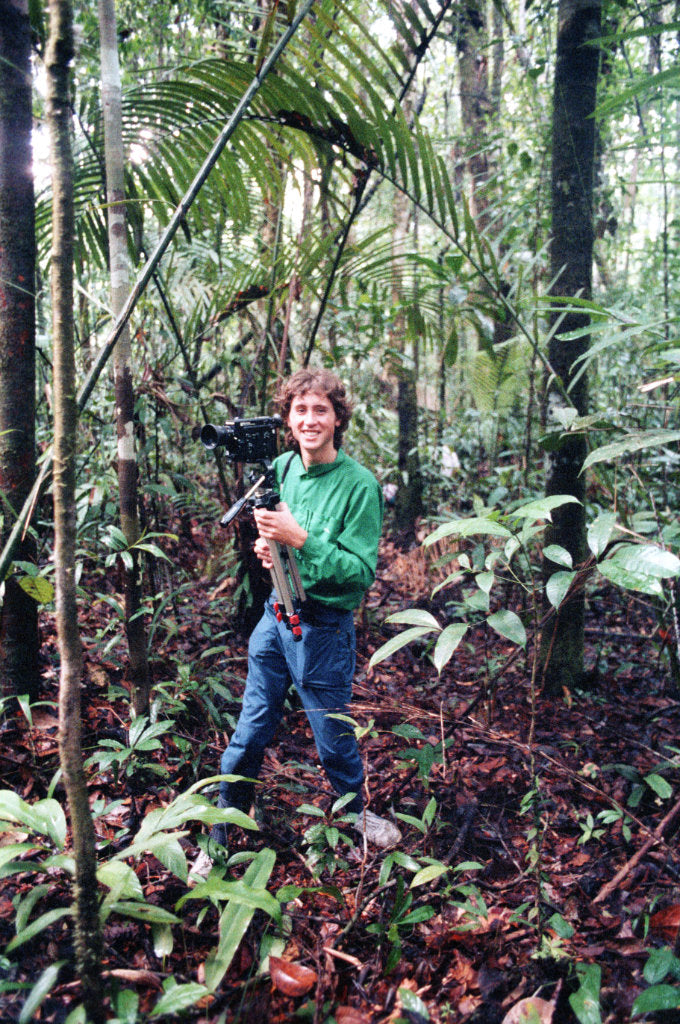
Above: Photo of Artist John Dyer in the Amazon in 1989

Above: Photograph of artist John Dyer Painting in the Amazon Rainforest
This preference for figurative styles in pop culture is driven by the ability of such styles to provide a more expressive and fuller representation of subjects, which resonates more in the domains of film, music, and visual arts.
Visiting the World's Top Galleries for Figurative Art
Globally, galleries specialising in figurative art attract art enthusiasts with their impressive collections. These galleries showcase the works of renowned artists, offering visitors a chance to explore the diverse styles and themes of figurative art. In most major cities globally a traveller will probably find a gallery.
Whether you’re an avid art collector or an enthusiast, visiting these galleries can be an enriching experience. They offer a glimpse into the rich history and evolution of figurative art, showcasing works that span various eras and styles.
From hyperrealism to expressive abstraction, these galleries provide a platform for artists to showcase their talent and for visitors to appreciate the depth and diversity of figurative art. Some of the best galleries in the world are The National Gallery and the Tate Britain in London, The Louvre in Paris, The Metropolitan in New York, The Rijksmuseum, Amsterdam, The Uffizzi in Florence - the list is endless.
Summary
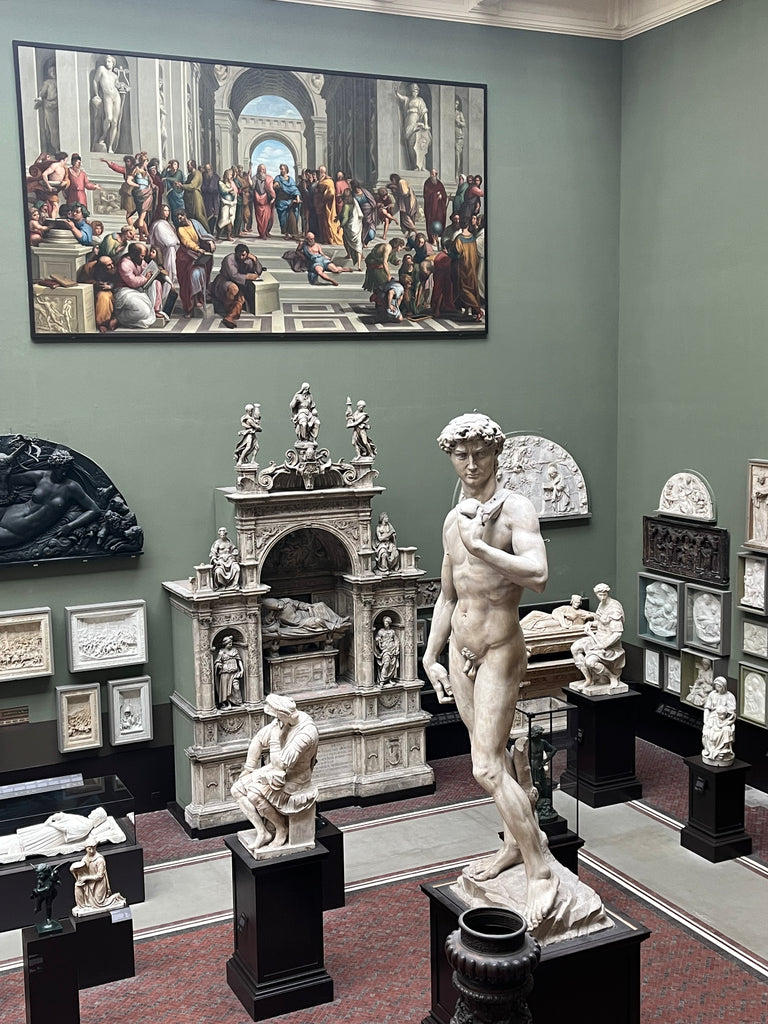
Above: Photograph of figurative art of the Renaissance period, at the V&A in London
Figurative art, with its diverse styles, historical significance, and impact on modern art, continues to fascinate artists and art enthusiasts alike. From the meticulous precision of hyperrealism to the emotional depth of expressive abstraction, and from the modern interpretations of stylised portraiture to the atmospheric paintings capturing everyday life, figurative art offers a rich tapestry of themes and styles. Whether it’s a painting that captures the essence of human existence or a sculpture that brings three-dimensional form to life, figurative art remains a timeless and powerful form of expression.
Buy The Latest Original Figurative Paintings Online
Frequently Asked Questions
What does figurative mean in painting?
In painting, 'figurative' means that the artwork is derived from real objects or sources, retaining strong references to the real world and particularly to the human figure.
What are the figurative styles of art?
Figurative art includes various styles such as Renaissance, Baroque, Realism, and Surrealism, all of which depict recognizable imagery of human or animal forms. These styles fall under the umbrella of Figurative artwork, capturing real-life imagery clearly.
What is the difference between a portrait and a figurative painting?
The main difference between a portrait and a figurative painting is that a portrait focuses on a specific individual, while figurative art explores the broader aspects of human existence. Both forms of art capture different aspects of the human experience.
What makes a figurative painting good?
A good figurative painting is able to reflect an epoch or era and captures the essence of the subject in a way that only art can. It should surprise, convince, and elicit a strong emotional response from the viewer.
What is a figuration in art?
A figuration in art refers to any work that clearly depicts real-life imagery, typically recognisable depictions of the human or animal form, falling under the umbrella of figurative artwork with various subcategories.
